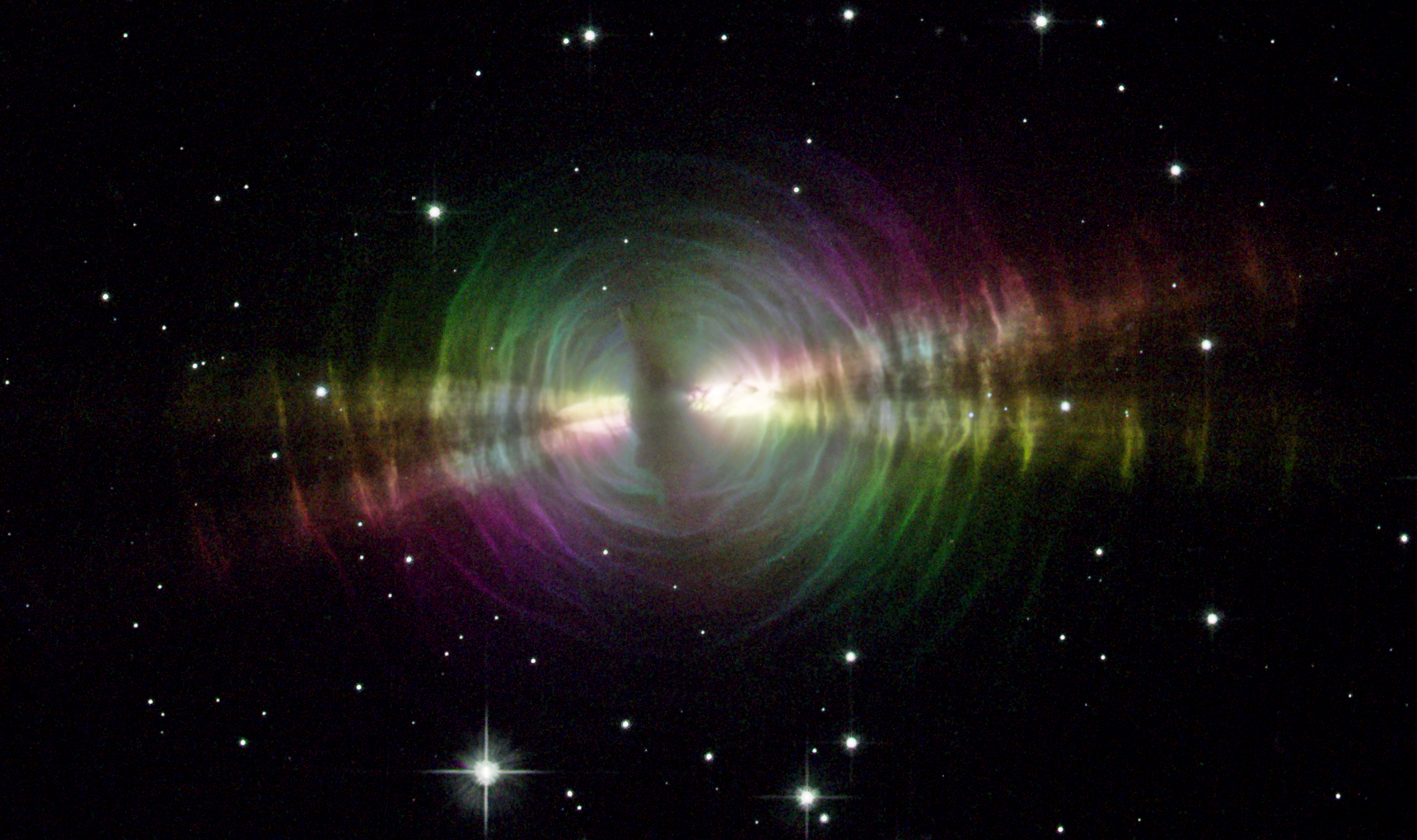I have, as you might imagine, absolutely nothing to add on the subject of polarization.
But let me do what I do best, namely, compare today's APOD subject, the Egg Nebula, with its sort of namesake, the Rotten Egg (or Calabash) Nebula!
The two nebulas don't look too similar, but you must remember that the Rotten Egg Nebula has not been photographed in polarized light. Note, however, that both nebulas have thick dust lanes along their "waists", which would be their equators. The Rotten Egg Nebula is clearly expelling a lot of material from its poles, whereas the Egg Nebula seems to have stopped pushing out so much matter, and it has a spherical distribution of matter around itself. The "bright arcs and circles" (as Wikipedia calls them) are perhaps remnants of distinct "pushes" as the star expelled its atmosphere "push by push"? The two "searchlight beams" in both directions are (I guess) - perhaps holes in the thick dusty torus around the central star, where light can escape?
Wikipedia wrote about the Egg Nebula:
The Egg Nebula (also known as RAFGL 2688 and CRL 2688) is a bipolar
protoplanetary nebula approximately 3,000 light-years away from Earth...
The Egg Nebula's defining feature is the series of bright arcs and circles surrounding the central star. A dense layer of gas and dusts enshrouds the central star, blocking its direct light from our view. However, the light from the central star penetrates the thinner regions of this dusty enclosure, illuminating the outer layers of gas to create the arcs seen in this resplendent image (Hubble Site). Spectra of the starlight scattered by the dust reveal that
the central star has a spectral type of F5. The photosphere of an F5 star is about 900 K hotter than that of the Sun, but it is still not hot enough to have begun ionizing the nebula. Therefore the Egg Nebula is at a slightly earlier evolutionary stage than the
Westbrook Nebula whose spectral type B0 central star has just recently begun to ionize the nebula.
Wikipedia wrote about the Rotten Egg Nebula:
The Calabash Nebula, also known as the Rotten Egg Nebula or by its technical name OH 231.84 +4.22, is a
protoplanetary nebula (PPN) 1.4 light years (13 Pm) long and located some 5,000 light years (47 Em) from Earth in the constellation Puppis. (...)
The central star is QX Puppis, a binary composed of a
very cool mira variable and an A-type main-sequence star.
The object is sometimes called the Rotten Egg Nebula

as it contains a relatively large amount of
sulphur. The densest parts of the nebula are composed of material ejected recently by the central star and accelerated in opposite directions. This material, shown as yellow in the image, is zooming away at speeds up to one and a half million kilometers per hour (one million miles per hour). Most of the star's original mass is now contained in these bipolar gas structures.
...
Much of the gas flow observed today seems to stem from a sudden acceleration that took place about
800 years ago. Astronomers believe that
1,000 years from now, the Calabash Nebula will become a fully developed planetary nebula.
And I can't keep this info about another protoplanetary nebula, Westbrook Nebula, away from you:
Wikipedia wrote about Westbrook Nebula:
Westbrook Nebula (CRL 618) is a bipolar
protoplanetary nebula which is located in the constellation Auriga. It is being formed by a star that has passed through the red giant phase and has ceased nuclear fusion at its core. This star is concealed at the center of the nebula, and is ejecting gas and dust at velocities of up to 200 km/s.[2] The nebula is named after William E. Westbrook, who died in 1975.
This nebula began to form about 200 years ago, and primarily consists of molecular gas.
...
The central star is believed to be of
spectral class B0 and has 12,200 times the solar luminosity...
The photosphere of this star is now hot enough to have begun ionizing the nebula, and the ionization region is expanding rapidly.
The size and rate of growth indicates that ionization began around the year 1971.



Once a sizeable portion of the nebula has been ionized, it will have become a planetary nebula. This means the Westbrook Nebula is at a somewhat more advanced evolutionary stage than the Egg Nebula, whose spectral class F5 star has not yet begun to ionize the nebula material.
Sorry for including smileys in Wikipedia quotes. You are not allowed to, I know. But I couldn't help myself. Like, you know, what did you do in
1971? I went to school. And the central star of Westbrook Nebula began ionizing a nebula.
Ann
 The Egg Nebula in Polarized Light
The Egg Nebula in Polarized Light



